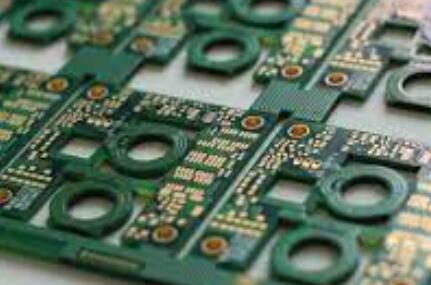Copper coin PCB is a type of multi-layer PCB, but a solid copper called a coin is embedded in the stack of PCBs. This allows for direct thermal connections from one side to the other or from specific layers to the outer layer.
It is a type of printed circuit board (PCB) with a copper strip added to it. It is worth mentioning that copper coin circuit boards are a type of multi-layer board.

Copper coin PCB
The thermal conductivity of copper in copper coin PCB is 30-200 times better than that of other circuit board materials.
The thermal conductivity of copper can be comparable to any popular conductive medium prepreg.
Copper coin PCB, once inserted or added to a printed circuit board (PCB), can be merged or taken into different configurations or forms.
Development Technology of Copper Coin PCB
When using materials with high thermal conductivity, the heat transfer rate is higher. Copper has extremely high conductivity and can provide conductivity up to 400 W/mK, just like other materials such as diamonds, their thermal conductivity can reach five times that of copper. Copper is one of the best methods for managing heat while maintaining conductivity and thermal conductivity.
A copper coin PCB is a simple solid copper insert or entry into the PCB, usually requiring cooling in the component. Copper coins can provide approximately twice the cooling compared to farms. And copper coins can provide direct contact between the heating component pad and the radiator, rather than using thermal conductive materials. The thermal conductivity of copper is on average 30 to 200 times better than that of any conductive medium prepreg.
Copper coin technology is most suitable for situations where a specific or small number of components on a PCB generate most of the heat. Copper coins provide the ultimate heat transfer solution on PCBs in a localized manner, regardless of the number of layers or PCB material. This concept is based on installing a copper coin press into a pre-made cut hole on a circuit board, just below an area identified as a hot spot, allowing heat to be directly transferred to the heat sink through the PCB stack. This, of course, did not accumulate materials through PCBs, which has caused cooling bottlenecks in history.
Copper coins can be integrated into different forms and configurations when inserted into a PCB. The configuration chosen by the designer reflects the trade-off between routing, power plane requirements, and the proximity of copper coins to components that require cooling.
Although this technology is still relatively new, we have seen great success in PCB design. Copper coins are the pinnacle of heat transfer and can be effectively applied at the bare PCB level.
The T-shaped shape is an example of how to utilize the superior characteristics of copper coin topology, where the heating pad or radiator is different in the area - small pad and the large radiator or the opposite. Another use case is whether there is a limit to the size of copper coins. The use of a T-shape allows us to maintain the overall size of the copper coin within the minimum range, while still in contact with pads smaller than the minimum size requirement for copper coins. The T-shaped coin provides a good balance between performance and space, as its shape allows for the flexibility of the coin to occupy space.
The advantages of copper coin PCB
1. Heat conduction plus control
The copper integrated inside the PCB is one thing for easy heat dissipation. Controlling or being able to regulate the entire process is another matter.
Due to faster heat conduction and excellent control of the process, you can reap two benefits of copper coin PCBs.
2. High-speed communication
You can only say that the performance of the circuit board is optimal when heat is transmitted faster from specific components and circuits.
With faster thermal conductivity, you can ensure the use of this board in high-speed communication applications. This also extends to promoting high-speed communication between several circuits.
3. Higher thermal conductivity
This is the main reason for the fast heat dissipation of the single board. High thermal conductivity helps to improve the heat transfer rate.
Undoubtedly, the copper coin PCB is a prayer for the diffusion of smaller and lighter printed circuit boards (PCBs). With this diffusion, it is necessary to create adaptable circuit boards that can be used in different markets. The embedded and embedded design of copper coin PCBs helps consumers have many choices when dealing with applications.